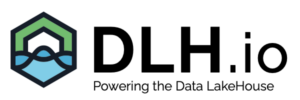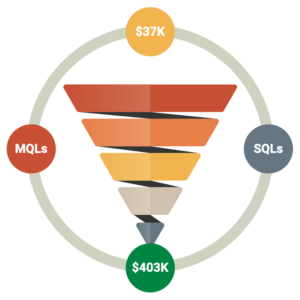HR analytics is a field focused on collecting talent and training data. HR professionals then apply the data to analyses to make business decisions. Depending on if the HR team is working with a team of data analysts or data scientists, the analyses in question may be simple, such as basic descriptive statistics, or more complex like predictive models. The key is that HR analytics requires both a knowledge of HR and data, meaning both technical and soft skills.
In this article, we’ll go into five HR analytics use cases and examples. Focusing on several industries, including healthcare, business, education, finance, and IT, we’ll describe what can be done as well as what is currently being done in the field of HR analytics (also known as people analytics).
HR Analytics Case Studies
If a company wants to get started with HR analytics, it’s important to understand different ways to implement these practices. The following sections review some of the use cases available in the industries listed we mentioned above.
Uber
As a company, Uber leverages HR analytics (people analytics) to increase its business impact. A recent podcast included an interview with RJ Milnor, Head of People Analytics at Uber, discussing how Uber used employee listening to develop its return-to-office strategy.
To start, Uber has been using employee listening for a while, but they recently changed their policy from incorporating a semi-annual survey to continuous listening. This started out with a COVID survey during the pandemic but quickly turned into a full HR analytics project for Uber, including monthly surveys with continuous response periods.
By listening to their employees, Uber found that they could better understand workers’ concerns about returning to the office after the pandemic. For instance, they discovered that caregivers of children under five years old were facing some of the biggest obstacles. To address this, Uber went out of its way to provide different flexible working hours and implemented a practice of recording nonessential meetings to ensure that caregivers could attend to their children while working at Uber.
In order to visualize the results of the surveys and efforts to address concerns, Uber employs multiple dashboards. When it comes to HR analytics dashboards, the company uses Manager Dashboards and Employee Dashboards so that leadership can communicate with their employees, while employees can track their own progress when it comes to completing surveys and ensuring their voices are heard.
This technique for employing HR analytics worked well for Uber to get employees back in the office and more satisfied with their job. Without collecting and displaying data from multiple sources, this wouldn’t have been possible and may have increased turnover.
Metcalfe’s Market
This family-owned grocery store has worked diligently to employ people analytics in their companies to attract new talent. Metcalfe’s Market and SpartanNash looked closely at employee feedback to determine what leads to better job satisfaction and employee retention. For example, Metcalfe’s Market found that celebrating employee milestones played a big role in satisfaction. They celebrate birthdays and work anniversaries. They even hold employee appreciation days, just because.
When they switched to a new HR platform at the beginning of 2022, Metcalfe’s Market was able to let employees switch shifts and extend their scheduling periods so that employees could plan further in advance.
This platform has opened doors for Metcalfe’s Market that weren’t available before because it leverages multiple sources of data from employees. Additionally, AI is used to determine if someone’s employment is at risk due to a drop in 401K contributions or a move that would significantly lengthen the worker’s commute time
Walmart
As the nation’s largest employer, Walmart stays ahead of the competition by employing people analytics strategies for upskilling. Specifically, their new VR-based employee career growth program is paving the way for new managers. They call it the “one global Walmart Academy” and it wouldn’t be possible without collecting and analyzing data from several HR and L&D sources to figure out the best way to train employees.
According to Walmart leaders, their platform is powered via Pico Neo 3 VR headsets and VR training solution provider Strivr. They’ve even built a Walmart Academy app that allows for on-demand training and no physical commute.
Additionally, Walmart provides mobile devices for employees to access the training app on company time. This exemplifies a sophisticated example of HR analytics by combining the data with programming and engineering to power the new platform that is shaping the company’s training program.
Northwell Health
By using Oracle Cloud, Northwell Health, a leading health system in NY, optimizes staffing and resources. Oracle Analytics Cloud allows the hospital system to calculate precise staffing needs and manage recruitment efforts to better ensure patient safety.
One benefit of the Oracle Cloud is that Northwell no longer has to do manual data integration or manage multiple apps for their data sources. This led to an increase in productivity and specifically, the hospital focused on how this HR analytics platform allowed clinicians to deliver a higher standard of patient care.
With the newly centralized data warehouse, Northwell was able to identify staffing shortages and manage nurses’ schedules. In addition, they put everything together in a people analytics dashboard to visualize the statistics and communicate the findings to company leaders.
Oracle Cloud offers suites of integrated applications. In addition, several analytics platforms have connectors for Oracle Cloud to combine data from other sources. For instance, DataLakeHouse.io has a way of connecting Oracle Netsuite financials to Snowflake to better manage a company’s data. This self-service ELT connector makes data integration easy for teams, with no technical and coding knowledge required.
KPMG
KPMG, one of the Big Four accounting organizations, regularly utilizes HR analytics, but more recently they developed a solution that could predict when an employee is at risk of resigning. This allows the company to swiftly implement retention strategies before it is too late and reduce employee attrition or turnover.
The solution, known as “Workplace Analytics” lets KPMG employers predict attrition patterns based on satisfaction and engagement in the workplace. Based on their analysis, KPMG identified five key features to evaluate employee attrition equations, which are summarized below:
- Identifying attrition and the cause before it happens
- Detect burnout as it’s happening
- Discover areas of disconnect in real-time
- Identify the top performers in a company so employers can help accelerate their learning
- Understand why top performers are outperforming others
Based on a pilot intervention, KPMG’s HR analytics models created $19 million in income.
How DataLakeHouse.io can Help
If you’re looking for a no-code solution for your HR analytics projects, consider using DataLakeHouse.io. The platform offers comprehensive analytics, incorporating data from your HR system and many other sources you’re using. Whether it’s Food Delivery Data, so you can analyze the effectiveness of your meal benefits on employee satisfaction, or Ceridian Dayforce to match benefit statistics to employee information.
Not only does DataLakeHouse.io offer connectors to bring your data together, but we also provide pre-built analytic dashboards that enable you to become a data-driven organization.




